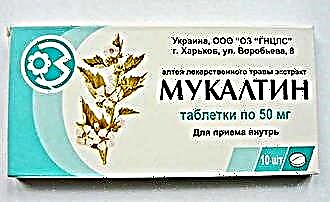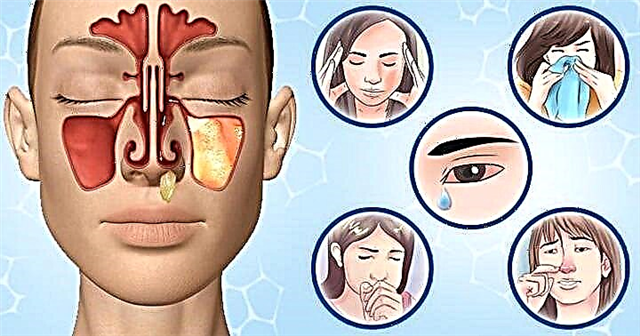Inflammation of the tracheal mucosa is most often recorded in the winter period, however, the development of the disease in the warm season is not excluded. For treatment, an integrated approach is used, including gargling with antiseptic, anti-inflammatory solutions, as well as inhalation for tracheitis.
The cause of the disease can be:
- an infectious agent, often viruses, sometimes bacteria;
- general hypothermia, including the influence of a draft, getting wet in the rain;
- deep breathing in the cold;
- taking cold drinks;
- inhalation of dust, smog.
You can suspect tracheitis by the following symptoms:
- dry cough, attacks of which are observed more often in the evening, morning;
- soreness behind the breastbone when coughing;
- viscous sputum;
- subfebrile hyperthermia;
- malaise;
- hoarseness (associated with frequent coughing, which leads to inflammation of the vocal cords);
- sore throat when talking, swallowing.
In the absence of timely therapy, the likelihood of complications increases. With adequate treatment, the disease is not a serious pathology, however, a long-lasting inflammatory process predisposes to its spread. As a result, bronchitis develops, and with damage to the lung tissue, pneumonia.
Treatment of tracheitis should be aimed not only at reducing inflammation, preventing its spread, but also fighting the infectious agent.
Against the background of smoking, the acute process undergoes chronicity with periodic exacerbations. In order to prevent the chronic form of the disease, therapy should be started when the first symptoms appear.
What is a nebulizer
Not everyone knows how to use a nebulizer, so first we'll tell you what it is. The popular nebulizer nowadays is a device for converting medicine into small particles in order to provide deeper penetration into the respiratory tract.
The device consists of a compressor, a cup for a medicine, a mask, and tubes. In the process of passing the medicine through the tubes under pressure, tiny particles are formed, which come to the person.
Before starting inhalation, it is necessary to prepare the medicine, first diluting it with saline. The finished product is poured into a glass that is connected to the tube. Max is attached on top. If the procedure is performed on a child, the mask should be tightly applied. Adults clasp the mouthpiece with their lips.
The device should be turned on, with the cup positioned vertically. The duration of the procedure is 7-10 minutes.
Inhalation rules
Today, inhalations are performed using modern devices, which greatly facilitated the procedure. Nebulizers are widely used for adults and children, providing a good therapeutic effect.
Thanks to the fine particles of the aerosol, into which the solution is converted, the drug penetrates directly into the inflamed tissues of the upper respiratory tract. As a result, the therapeutic effect develops at the beginning of inhalation.
The use of drugs with a nebulizer provides an anti-inflammatory effect, the mucous membrane is moistened, tissue edema and sputum viscosity are reduced. Thus, breathing becomes easier, the excretion of phlegm is accelerated.
Before using medicines, you must make sure that there is no allergic reaction to this medicine.
To achieve the maximum therapeutic effect, you should adhere to some rules:
- The procedure is performed one hour after a meal. This is due to the risk of vomiting on the background of stimulation of the cough reflex during sputum discharge.
- After inhalation, it is forbidden to smoke, go out into the cold,
 eat for 1.5 hours.
eat for 1.5 hours. - Inhalation is not performed with febrile hyperthermia.
Inhalation with a nebulizer is especially convenient in childhood, during pregnancy, when the intake of medications is limited. The device can be used in the early stages of the disease, which helps to reduce tissue edema, the severity of the inflammatory process, and prevents damage to surrounding healthy organs.
To increase the therapeutic effect, it is necessary to follow the rules for performing inhalation and exhalation. Of course, young children do not adhere to breathing recommendations, but this does not significantly reduce the effectiveness of inhalation. So that the child is not afraid of the device, parents can purchase a nebulizer in the form of a toy, carry out the procedure in a playful way.
Inhalation during the procedure should be slow, as deep as possible.
Then you should hold your breath, exhale also slowly, passively. If the patient is in serious condition due to concomitant pathology, you should not hold your breath.
Nebulizer benefits
Previously, steam inhalations were carried out without taking into account the loss of steam, its temperature, and the duration of the procedure. For example, after boiling potatoes, you had to cover your head with a towel and inhale the vapors before cooling the potatoes. At this time, part of the steam entered the environment, since there was no tightness, and the temperature of the steam was estimated directly during inhalation, which is extremely dangerous.
Nowadays, when developing a nebulizer, many factors were taken into account, so the device has a lot of advantages. These include:
- Continuous drug delivery to the upper respiratory tract.
- The ability to carry out treatment in the supine position.
- Deep breathing is not required if you feel unwell.
- The ability to use in children, pregnant women, the elderly.
- A forced position of the body is not required. The patient sits in a chair, completely relaxed.
- Temperature control, which prevents burns of the mucous membrane of the respiratory tract.
- Fine particles of the drug penetrate deep into the respiratory tract.
Given the many advantages, the nebulizer can be classified as the most effective therapy for tracheitis.
Nebulizer medications
 Therapeutic inhalations for tracheitis are performed using ready-made drugs or require preliminary preparation. Solutions, mixtures can be purchased at the pharmacy at an affordable price. The device should first be filled with saline / alkaline mineral water, which are the basis for the procedure.
Therapeutic inhalations for tracheitis are performed using ready-made drugs or require preliminary preparation. Solutions, mixtures can be purchased at the pharmacy at an affordable price. The device should first be filled with saline / alkaline mineral water, which are the basis for the procedure.
For the nebulizer, only physiological solution is used, heated to room temperature.
- Chlorophyllipt is widely used in otolaryngology, pulmonology to reduce the severity of the inflammatory reaction in the respiratory tract mucosa. Due to its composition, the drug has an antiseptic effect, stimulates regenerative processes, which promotes healing. The drug in its pure form is not used, therefore, it is recommended to dilute with a physiological raster with a volume 10 times larger than the dose of Chlorophyllipt. The duration of the procedure is up to 10 minutes.
- Acetylcysteine is prescribed to reduce the viscosity of sputum, to stimulate its excretion. After using it, the patient coughs up phlegm more easily, breathing improves. The drug is widely used in pulmonology when a cough is troubling. The drug is available in the form of a powder, which must be diluted with physiological solution in the same volume. For one session lasting up to 10 minutes, 4 ml of solution is enough.
- With a painful cough, shortness of breath, bronchodilators are prescribed, for example, Ventolin, Berotek. Medicines are available in the form of a solution in ampoules.Before inhalation, the drug is diluted with saline, the dosage is calculated taking into account the patient's age.
- Eucalyptus tincture is used in dilution of 10 drops per 200 ml of saline. For a session, 3 ml of the mixture is enough. The procedure should be repeated three times a day.
- Do not forget about alkaline water, for example Borjomi. It moisturizes the mucous membrane well, improves the drainage function of the bronchus, reduces the viscosity of sputum, and stimulates its excretion.
- Mucaltin tablets are used to provide
 emollient, expectorant action. It takes 1 tablet to grind, completely dissolve in 70 ml of saline. For a session, 3 ml of diluted medicine is enough.
emollient, expectorant action. It takes 1 tablet to grind, completely dissolve in 70 ml of saline. For a session, 3 ml of diluted medicine is enough. - Pertussin includes thyme extract, thyme extract, and is widely used for coughs. For dilution in saline, it is required to take the medicine in a 1: 1 ratio for the treatment of adults, or 1: 2 for a child under 12 years of age. For one session, 3 ml of the medicine is enough.
- Inhalation for tracheitis can be performed with anti-inflammatory drugs, for example, Rotokan containing chamomile, calendula, yarrow extract. The drug is diluted with saline (1:40).
Also, propolis in the form of a tincture, the homeopathic remedy Tonsilgon N, and an alcoholic infusion of calendula are used by inhalation. If bacterial inflammation is suspected, furacilin is prescribed, which, due to its antiseptic effect, leads to the death of bacteria. The aqueous solution is used in pure form, 4 ml per session.
A ready-made solution of Furacilin can be purchased at a pharmacy or one tablet can be completely dissolved in 100 ml of saline. Dioxidine also has broad spectrum antimicrobial properties. The drug (1%) is diluted with saline solution 1: 4. If you suspect purulent inflammation, when the sputum acquires a yellow, greenish tint, you can use Miramistin for inhalation.
Usually, medicinal inhalations with saline for tracheitis are carried out three times a day, however, an increase in the number of procedures is possible, taking into account the patient's age, the severity of the disease, and the presence of concomitant pathology.
It is not recommended to use essential oils for a nebulizer, since fatty particles close the lumen of small bronchi, making it difficult to breathe and excretion of phlegm.
Oil inhalations are allowed when steam procedures are performed over a container with a warm solution. To do this, it is enough to add 2-3 drops of oil to a glass of boiling water. For anti-inflammatory purposes, chamomile oil, sage, oak bark are used.
If you suspect tracheitis, inhalation will help to have a quick effect, slow down the development of the inflammatory process, and also relieve clinical symptoms. However, if you experience febrile hyperthermia or an excruciating cough, you should see your doctor.

 eat for 1.5 hours.
eat for 1.5 hours. emollient, expectorant action. It takes 1 tablet to grind, completely dissolve in 70 ml of saline. For a session, 3 ml of diluted medicine is enough.
emollient, expectorant action. It takes 1 tablet to grind, completely dissolve in 70 ml of saline. For a session, 3 ml of diluted medicine is enough.

